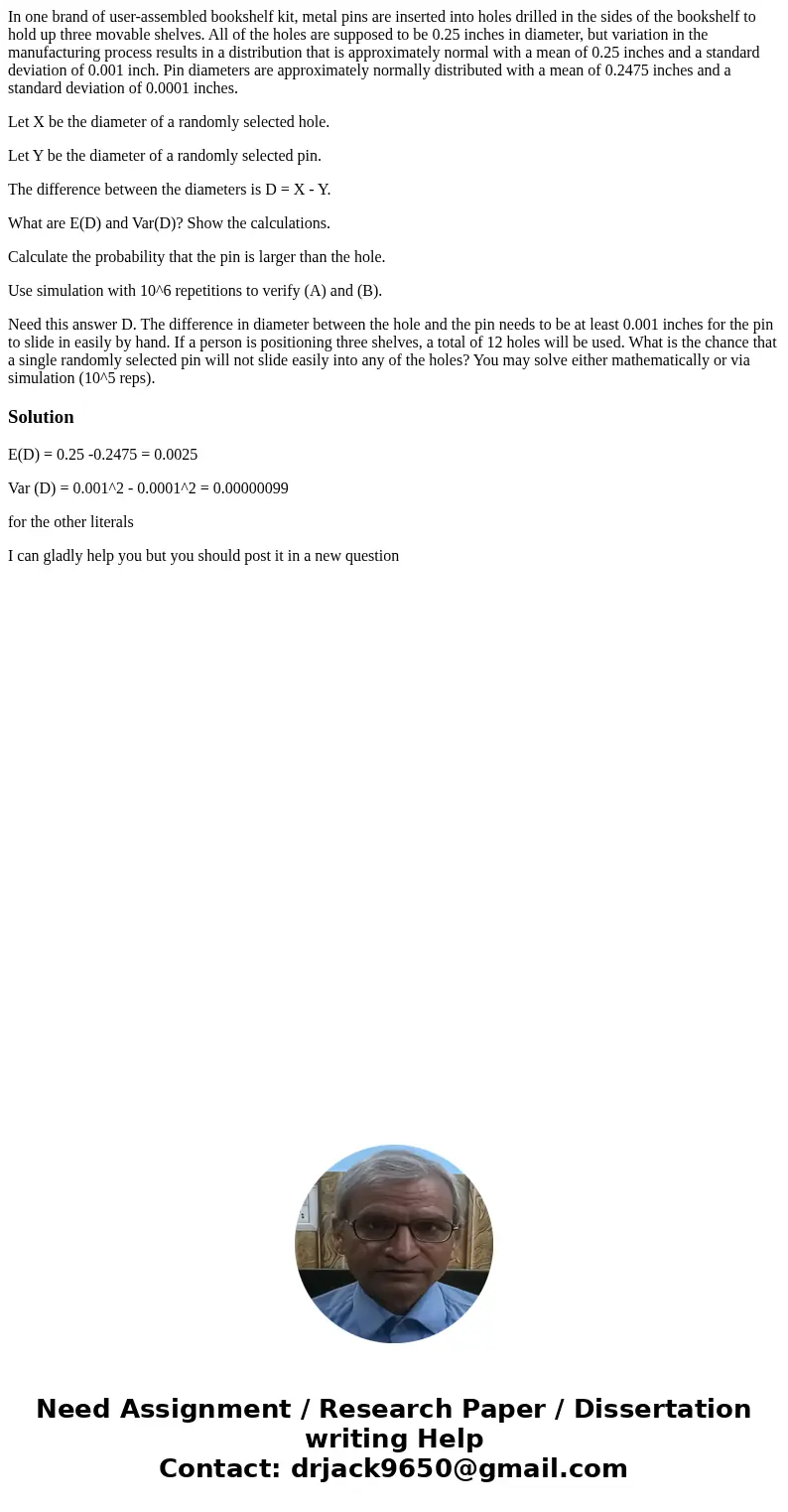In one brand of userassembled bookshelf kit metal pins are i
In one brand of user-assembled bookshelf kit, metal pins are inserted into holes drilled in the sides of the bookshelf to hold up three movable shelves. All of the holes are supposed to be 0.25 inches in diameter, but variation in the manufacturing process results in a distribution that is approximately normal with a mean of 0.25 inches and a standard deviation of 0.001 inch. Pin diameters are approximately normally distributed with a mean of 0.2475 inches and a standard deviation of 0.0001 inches.
Let X be the diameter of a randomly selected hole.
Let Y be the diameter of a randomly selected pin.
The difference between the diameters is D = X - Y.
What are E(D) and Var(D)? Show the calculations.
Calculate the probability that the pin is larger than the hole.
Use simulation with 10^6 repetitions to verify (A) and (B).
Need this answer D. The difference in diameter between the hole and the pin needs to be at least 0.001 inches for the pin to slide in easily by hand. If a person is positioning three shelves, a total of 12 holes will be used. What is the chance that a single randomly selected pin will not slide easily into any of the holes? You may solve either mathematically or via simulation (10^5 reps).
Solution
E(D) = 0.25 -0.2475 = 0.0025
Var (D) = 0.001^2 - 0.0001^2 = 0.00000099
for the other literals
I can gladly help you but you should post it in a new question

 Homework Sourse
Homework Sourse